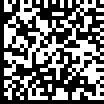For an industrial organization, information is everything. From inventory planning to asset management and everything in between, having accurate data is key. Modern solutions such as data matrix codes provide ways to encode a large amount of information in a very small physical space.
How Do Data Matrix Codes Work?
Data matrix codes are specialized 2D barcodes used to encode and store information, which is then accessed via a scanning device.
Data matrix symbols are square shaped, and made up of smaller black and white squares.

The square pattern appearance is similar to other 2D codes such as QR codes, but with some variations. In simple terms, they don’t have the larger squares toward the corners that QR codes have. This is an easy way to tell the two types apart.
Informational Accuracy
An important aspect of any information is maintaining the highest level of accuracy as possible. Mistakes in any sector can be costly, and have serious repercussions.
Data matrix codes are an extremely accurate data solution. They feature built-in error correction, to prevent any misreading from occurring.
You can probably remember a time you stood in line at the supermarket while the cashier struggled to get an item to scan. With data matrix codes, this is highly unlikely as the codes are extremely resilient. Even if they get slightly damaged they can still be scanned with accuracy.
What Are Data Matrix Codes Used For?
Small Spaces
One of the benefits of data matrix codes is that they are capable of encoding a large amount of data in a small space. This code can store more information in a smaller amount of space than UPC barcodes.
A data matrix bar code can be made up of both letters and numbers. This opens up even more possibilities for their use. For example, an elaborate inventory code with letters and numbers incorporated.
![]()
These codes are often used for small electronic part marking since they can convey a large amount of info in such a tiny space. Part marking small items is a great use for data matrix codes. This small code includes up to 2,335 alphanumeric characters.
In some instances, organizations will mark the 2D data matrix directly on their equipment with dot peen or laser marking. However this can be difficult depending on the surface, and may wear over time.
UID Tags
When it comes to military applications, versatility and durability is a must.
MIL-STD-130 mandates the use of the UID tag system. This system is in place to provide a unique identification code for each and every military asset (within certain parameters). These UID nameplates are marked with a data matrix code, which holds all the necessary information for asset tracking.
Industrial Applications
For most industrial organizations, large machinery and equipment are vital for business. These machines typically feature a tag or nameplate of some variety with relevant information. Many companies use data matrix codes on their equipment tags to turn the machine into an asset which can be scanned.
While marking machinery and tools may be the most common use, certain industries have found their own ways to implement these codes to great success.
For example, the food industry uses data codes to ensure accountability of all food and ingredients as it goes through the manufacturing process. This prevents products from being misidentified or mislabeled, and prevents the possibility of food contamination.
Industries
Since industrial Data Matrix codes tags have so many uses, they have been integrated into a wide range of verticals.
A few examples include:
- Aerospace
- Automotive
- Manufacturing
- Food Processing
- Electronics
- Telecommunications
- Well Permits
- Many More!
Process Options for Data Matrix Tags
Photo Anodization
Photo anodization is the most durable option for data matrix codes. This solution is often the most ideal option for tough industrial environments. These tags and nameplates hold up to wear and tear, chemicals, and weathering.
Need an example of durability? This is the primary solution the military uses for its MIL-STD-130 UID tag requirements. The tags can hold up to such a wide range of wear, lasting for 20+ years outdoors.
The high resolution quality of this process, coupled with a matte finish makes these codes incredibly easy to scan.
In addition, it is simple to include other information, company logos, and more. Your tags can include text, your logo, phone number, and a data code; all in one metal id solution.
Screen Printing
Screen printing is a great solution for some applications. These designs can include logos, multiple colors, and text. These printings can include codes for scanning.
Unlike other solutions, screen printing is a slightly less durable process. It uses topical ink which can wear if exposed to tough conditions.
Labels and Decals
If metal substrates are not right for your application, there is also the option for custom made labels and decals. Custom decals can be produced with any design, and in full color. They are bright and stand out, making them especially useful for industrial safety uses.
One great perk to using labels is their easy application. Simply peel off the adhesive backing and apply the label to any surface. This makes labels with codes very versatile as they can fit into compact areas, and on a wide array of products.
Wrap-Up
In many ways, data matrix codes are one of the most important elements of a piece of equipment, tool, or machine. While the device may accomplish a very difficult task, it isn’t worth anything if it is not run correctly, monitored, and maintained. Data matrix codes provide the pertinent information industrial organizations need to successfully operate, all in a compact and easy to access form.